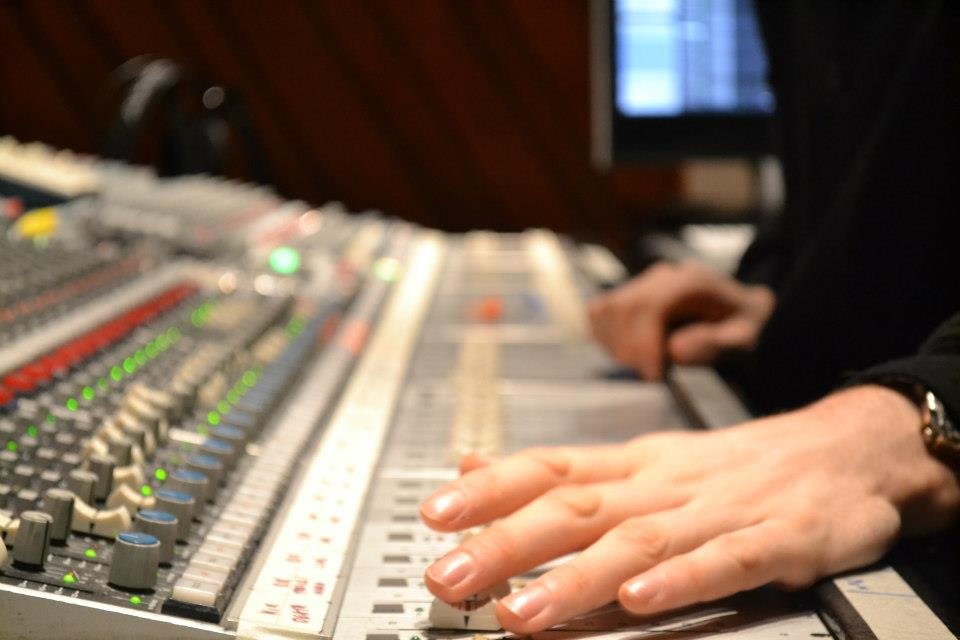
Frequently asked questions
-
This one is probably the most asked question that engineers receive (and for good reason!).
It’s a great question, but one of the most difficult to answer. Recording costs work on a sliding scale. Some of the variables include: how much time you need to record, how many instruments are involved, whether it includes pre-production, editing, mixing and mastering. It also depends on the facility you are working in. Studio rates can vary greatly depending on gear, size, amenities, staff, even location. This is why I highly encourage people to tell me about their projects in as much detail as possible, starting by answering some of the questions above. If you have a budget in mind let me know! This way we can figure out how to meet your needs and expectations while also working within the time frame and budget that works for you. -
As a freelance producer and engineer, the short answer to this is wherever we want!
I have several studios throughout the GTA I like to work out of that can fit various needs and budget sizes. Oftentimes I can negotiate a preferred rate, so let’s talk about where you’d like to work!
-
I'm fueled by creative diversity, and my passion for music has led me to explore a wide range of genres. While I have a special connection with rock and heavy music, I find joy in working on anything from experimental and ambient to blues and country, R&B and jazz, and everything in between. Whether you're interested in a fresh take on a classic sound or looking to push boundaries with something entirely new, I'm excited to collaborate with you and bring our shared vision to life.
-
Choosing someone to mix your song can sometimes feel like a gamble. Sure you’ve heard my work and it sounds great, but will it fit for your record?
In certain cases I will offer to do what we call a “test mix”. I’ll mix one song to see if we share the same vision of the music before you commit to having me mix the whole record. We’ll talk about your sonic signatures and what your end goal is for the sound. You’ll only pay if you like the mix!
-
Depending on the genre you absolutely do not need to do any editing. Editing is an artistic choice, but be aware that there are varying degrees of editing. Pop music tends to be more heavily edited in the sense that all the instruments are extremely tight with each other. Depending on the song or genre, editing can be a powerful tool when used subtly to address minor performance issues. We’re all human and none of us are perfect. Maybe you nailed that one take but there are a few sections that you didn't quite nail. This is where some editing can help smooth out these parts so you’re not forever haunted by that one rushed drum fill or flat note!
-
Production can be considered as creative guidance. Anything from helping with song arrangements, chord progressions, lyrics and melodies or instrument choice can all be considered production.
Pre-production is just production in the early stages of recording, oftentimes done at a rehearsal space in order to establish tempos, song structures, create guide tracks and a general blueprint of the songs to be recorded. It helps to plan as much as you can ahead of time so we spend less studio time figuring out the basics and more time being creative and capturing the performances.
-
The easiest thing in this case is to put me in contact with your recording engineer as they will often already know how to send “mix ready” files, but in case you are doing it yourself, here are some tips to make sure the process goes smoothly for the both of us:
1. Names and labels. Please name/label everything. It makes it so much easier and faster for me when I know what the files are. Common naming schemes would be Kick In, Kick Out, Snare Top, Snare Bottom, Rhythm Guitar, Lead Guitar, Vocal Harmony, etc. This way when you tell me to turn up the “Crazy Lead” part, we’re speaking the same language and I’m not dealing with a bunch of files named “Audio 1”.
2. Consolidate your tracks to the start of the song. This means all the individual tracks have the same start time. You’ve checked all your edits, added fades/cross fades and then consolidated them into one continuous file from start to end.
3. Exporting files. Please export your files as mono WAV files instead of bouncing them as stereo mixes. Oftentimes people will “bounce” their files instead of exporting them which essentially creates stereo mixes of every individual track. Mono files would typically be all your individual drum mic's. Also make sure you export them as WAV files at the same sample rate and bit depth that you recorded them at.
4. How to handle FX. If you’re using a lot of FX on your session it might be a good idea to either A) print the FX onto their own track or B) send me a wet (a version with the FX on) and a dry (a version with no FX on). This way we’re not committed to the FX blends and can mix them to taste later.
5. If you’re sending a Pro Tools session, in addition to the above notes, please remove and delete all extra playlists and audio files before you send them. There’s no reason for me to receive 20 takes of a guitar solo because it only makes for larger file size and transfer times. The easiest way to do this is to go to your file menu and ‘Save Copy In’ and select “Main Playlists Only”. If you’re unsure of anything don’t hesitate to ask me.
6. Other bonus things to include are: general notes about parts (maybe you want a particular effect in a certain part). Time signatures and bpm are helpful as well as they allow me to lock time based effects to the tempo of the song. Markers in Pro Tools sessions help me to identify sections so when you tell me to bring the vocal up in the Bridge I can quickly jump to that section. Also, include your rough mix so I can hear what you’ve been listening to and get a basic idea of what the parts should sound like.
7. Mix files are too large to send through email so use a file transfer service like WeTransfer, Dropbox, Hightail or Google Drive. Most of them are free up to a certain amount of data. When transferring a lot of files, be sure to separate songs into folders and “zip” them to reduce file size as much as possible.
Do you have any questions that aren’t covered here? Shoot me a message!
